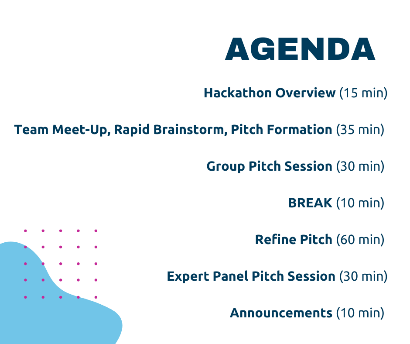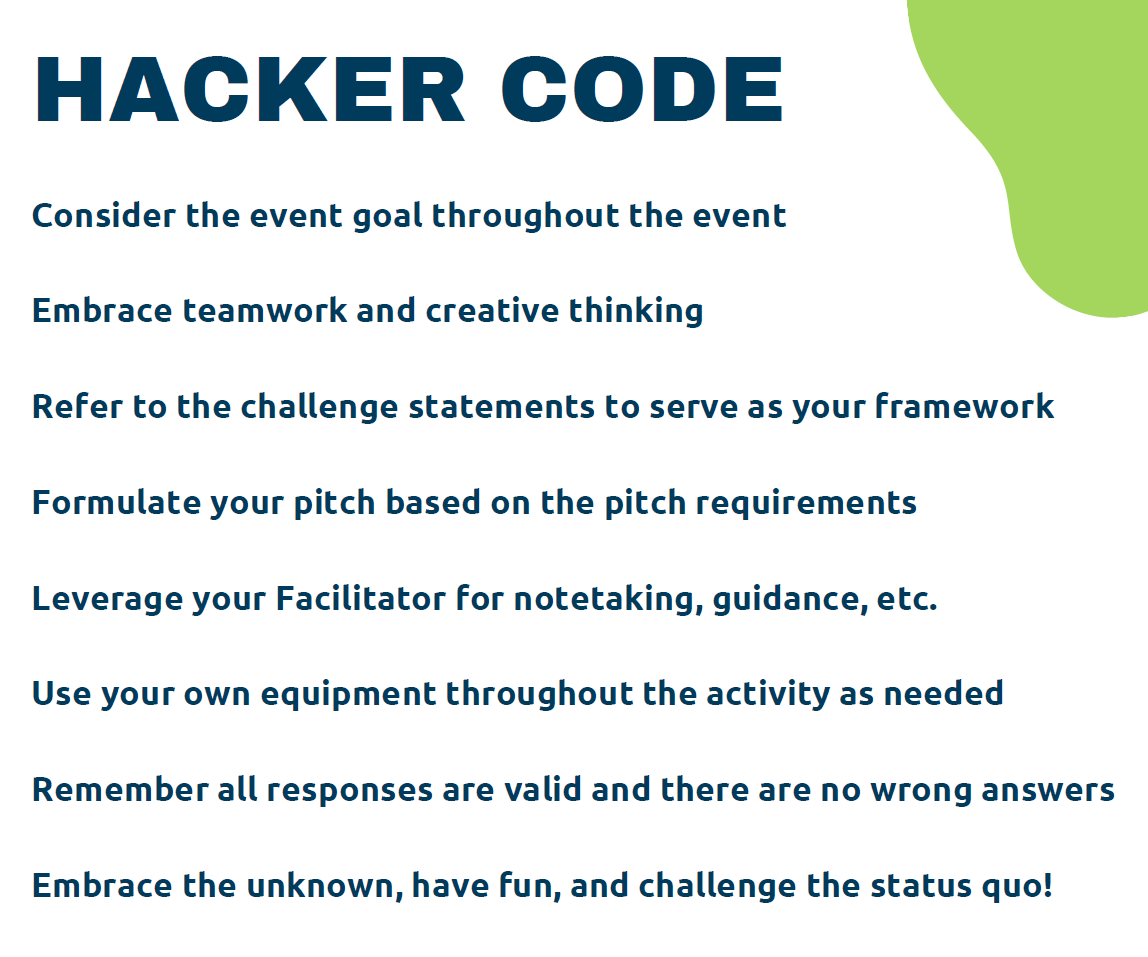


Throughputs in Action
Cracking the Code: An NPD Hackathon to Solve for Social Determinants of Health (SDOH) Education
Submitted by:
Veronica Bigott, MSN, RN, ACNS-BC, MEDSURG-BC, GERO-BC, NPD-BC (pictured left)
Lillian Jensen, MN, RN, CNL, NPD-BC (pictured middle)
Stephanie Zidek, MSN, RN, AGCNS-BC, NPD-BC, NEA-BC (pictured right)
Are you seeking an innovative solution to an insurmountable organizational problem yet have minimal time, resources, and inspiration to get started? One system Nursing Education and Professional Development (NEPD) department sought to overcome those age-old organizational obstacles using a novel approach—the hackathon.
The New Graduate Nurse Residency (NGNR) Program at Advocate Aurora Health, a large Midwestern health system spanning two states and 28 hospital sites, wanted to address longstanding opportunities associated with social determinants of health (SDOH) (Office of Disease Prevention and Health Promotion, n.d.). The NGNR Program is a Practice Transition Accreditation Program (PTAP) accredited systemwide transition to practice program welcoming over 1,500 nurse residents annually. The program is held over a six-month period with optional post-residency opportunities to support nurse engagement and retention.
Prior to systemwide implementation, the NGNR Program planned to include a community outreach branch for interested nurse residents. The coronavirus (COVID-19) pandemic paused many of the planned community-based initiatives and shifted the focus for the future of the program. Following the recent organizational lift of meeting and travel restrictions, the NGNR team opted to re-visit community outreach efforts with a diverse group of nursing professional development (NPD) representatives using a hackathon approach.
Background
The hackathon originated in technology-based communities and is popular among computer programmers and software designers. The purpose of a hackathon is to bring together individuals to develop an innovative solution from scratch (Kienzler & Fontanesi, 2017). Hackathons traditionally require minimal preparation and allow for dynamic group brainstorming. The approach leverages collaboration, creativity, and rapid problem-solving to create new approaches to optimize healthcare (Mevawala et al., 2021). By the end of the experience—which can range from hours to days—all participants design a viable product for implementation consideration.
The experience can be structured to best meet the needs of the organization and participants. Hackathons can be hosted virtually or in-person, depending on the scope, size, and overarching goals. Most hackathons award a Most Viable Pitch or MVP, which is intended to be fast-tracked for further development within the organization (Johnson & Johnson, n.d.). A hackathon allows for nurses and interprofessional partners to connect in a supportive and energetic setting to revolutionize healthcare delivery and the nursing profession.
Methods
A planning committee consisting of the Director of NEPD and two Lead Nursing Professional Development Specialists (NPDS) convened to develop a nursing hackathon for an upcoming quarterly NGNR team retreat. The committee began by conducting a hackathon literature review and contacting subject matter experts to better understand the structure, approach, and application of the hackathon concept. Leveraging best practices as noted in the literature, the planning committee set out to define key logistics and objectives: (1) Challenge statements (2) Number of hacker teams and hackers (3) Genius Bar/Facilitators and role (4) Guiding principles/Hacker code (5) Hackathon pitch requirements (6) Expert panel for judging and scoring rubric (Sigma, n.d.).
To align with the organization’s nursing strategic plan, the Hackathon topics and challenge statements focused on community service innovations relating to SDOH. Given the novel nature of the hackathon concept, the planning team deliberately limited membership to 9 total participants divided evenly into three groups. The literature identified the best practice of a “genius bar” facilitation. The planning committee modified this concept to include one facilitator in each room. This role served as a neutral party focusing on ensuring alignment to the purpose and goals of the hackathon and documenting concepts presented.
A set of guidelines, the “Hacker Code,” was developed by the planning committee and represented themes of embracing teamwork and creative thinking, keeping an open mind, respecting all ideas presented, utilizing the challenge statements as guiding framework for the idea/pitch, embracing the unknown while having fun, and challenging the status quo.
The planning committee assembled an expert panel to score each team's 10-minute pitch using an internally designed electronic Likert-scale rubric. Scoring was based on the solution feasibility, SDOH connection, creativity, sustainability, scalability, and nurse resident engagement. The MVP went to the team with the highest score.
Implementation
The virtual hackathon began with an overview of the purpose of the event, roles of the facilitators, and agenda for the day. The ultimate goal for the Hackers was to “Create a community outreach opportunity with SDOH focus for the nurse resident.” The following challenge statements guided their connection to that goal:
- The NGNR program initially planned to offer various post-residency opportunities. How can community outreach opportunities be tailored to the nurse resident population as an avenue to foster growth, support, and engagement?
- Optional offerings are difficult to ensure adequate participation. What strategies could be considered to enhance participation and remain accessible and sustainable throughout the system?
- The health system has a commitment to deliver a high level of equitable care and serve patients across all communities. How could your solution assist with our organization's effort to address SDOH and allow for a diverse and inclusive environment?
- How do existing frameworks, such as the health system’s purpose and values, NGNR Program mission, and 2020 American Nurses Credentialing Center (ANCC) PTAP Manual, support the addition of community outreach efforts?
Each team of three hackers had 35 minutes to meet, rapidly brainstorm project ideas, and draft a pitch. Inclusion criteria for the pitch included team introductions, proposed solution, solution logistics (who, what, when, where, cost, scale, time), system impact, and department feasibility. Subsequently, the teams reconvened into a large, virtual room where they had 10 minutes to present the idea to the group for real-time feedback and generate questions and guidance, followed by a 10-minute break. For the next 60 minutes, each team met to refine the pitch based on group feedback while accounting for the ultimate goal, challenge statements, and pitch requirements. Hackers could present their pitch utilizing an optional PowerPoint template or simply talk about the idea.
Hacker teams had 5 minutes to present their pitch, followed by a 5-minute question and answer period with the expert panel. The three team concepts presented were (1) A community outreach table promoting SDOH resources, (2) Using TikTok to engage the adolescent population, promoting and educating on health and wellness topics, and (3) A community pathway for nurse residents with dedicated time to explore SDOH volunteer opportunities and creation of centralized volunteer hub. (Refer to Figure 1: Hackathon Agenda)
Figure 1: Hackathon Agenda

At the end of the event, the expert panel submitted their scores, and two planning committee members tallied the results. The MVP went to the team with the TikTok engagement idea and thus received priority implementation within the NGNR Program.
Event Evaluation
Following the final pitch presentation, informal debriefing occurred with the hackers and expert panel. In the days after the event, participants reflected utilizing a Keep, Add, Less, More (KALM) retrospective. Retrospective themes identified that the hackathon was a fun, unique event for idea generation, and the initial feelings of uneasiness were overtaken once group brainstorming began. One hacker wrote “At first, not having any prep materials and needing to create on such a short time frame was a little anxiety-provoking, but once we got started, the ideas just kept coming!” They especially appreciated the mid-event presentation to peers as it helped illuminate areas to improve for a stronger pitch.
The planning committee and the hackers both identified the facilitator role as crucial in meeting the timeline and continually connecting to the purpose and desired outcome. The “Hacker Code” reference guide was vital in helping teams remember the challenge statements, goal, and pitch requirements; see Figure 2: Hacker Code. Lastly, the size of the teams—three to four hackers with one facilitator—was ideal in achieving agile and efficient solution development. Future considerations include time of the hackathon event—morning preferred over afternoon—for best brainstorming results and addition of a return on investment (ROI) aspect to the scoring component. Some suggested sharing the breakdown of the scoring with the hackers ahead of time, while others suggested increasing the voting pool to a larger team that included the hackers.
The expert panel appreciated the uniqueness and detail of each of the pitches. The panel expressed a desire for advanced preparation regarding hackathon structure and challenge statements prior to hearing the pitches as they did not join the event until the final presentations and so had missed the introductory presentation.
Figure 2: Hacker Code

Discussion/NPD Implications
News quickly spread throughout the NEPD department about the hackathon, and it was clear that it sparked the interest and imagination of hackers and fellow NPD team members alike. Many in the department felt that this process, if templated, could become a repeatable method of generating a multitude of well-developed solutions to difficult-to-crack issues. NPD practitioners are tasked to be innovative and agile in their work while partnering with clinicians, practice partners, and leadership. The hackathon is one solution that allows for mass participation and buy-in from stakeholders while easily navigating the pitfalls that come with “too many chefs in the kitchen.” It also levels the playing field so that everyone’s voice can be heard and allows the best idea—versus the loudest person—to win.
Conclusion
Innovation is in high demand, and external inspiration can be leveraged to turn an uncrackable issue into an enjoyable and enriching event. Based on the positive feedback, the planning committee is developing a toolkit that will be made available for others to replicate the hackathon experience. Hackathons are a scalable, low-cost tool that every NPD should have in their toolkit.
References
Johnson & Johnson. (n.d.). Nurse innovation hackathons. https://nursing.jnj.com/nurse-innovation-hackathons
Kienzler, H., & Fontanesi, C. (2017). Learning through inquiry: A global health hackathon. Teaching in Higher Education, 22(2), 129-142.
Mevawala, A. S., Strunk, F. A., Haghiri-Vijeh, R., Corless, I. B., Ramaswamy, P., Kamo, K. J., Scott, S., & Gray, S. (2021). Scientific global nursing hackathon experience. Nurse Educator, 46(6), E154-E157. doi: 10.1097/NNE.0000000000001066
Office of Disease Prevention and Health Promotion. (n.d.). Social determinants of health. Healthy People 2030. U.S. Department of Health and Human Services. https://health.gov/healthypeople/objectives-and-data/social-determinants-health
Sigma. (n.d.). Sigma hackathon. https://www.sigmanursing.org/connect-engage/meetings-events/chwe/attendees/hackathon